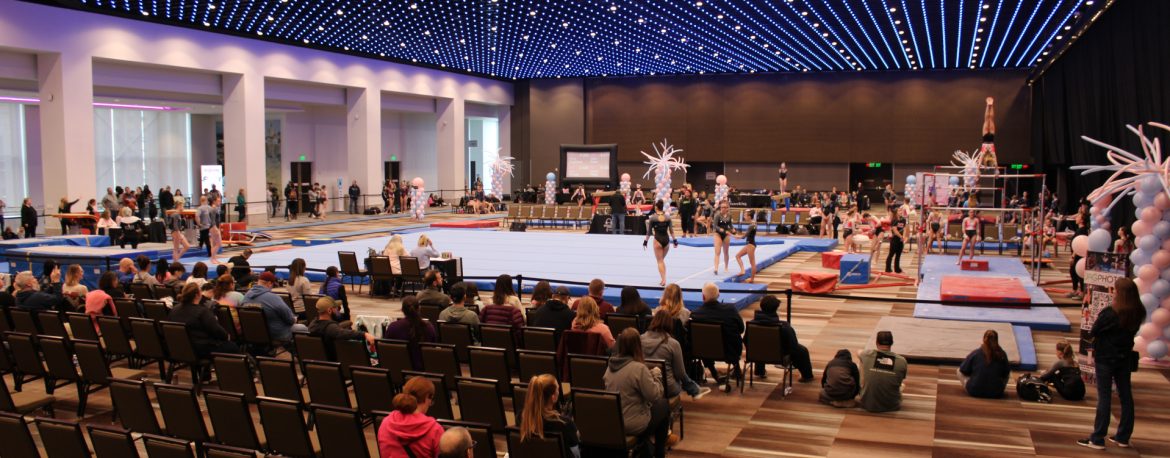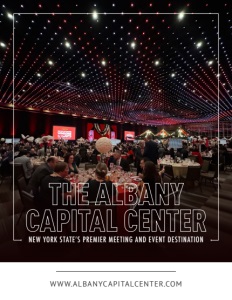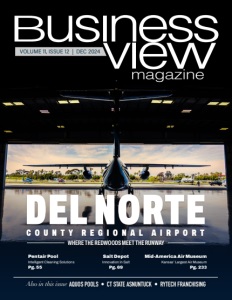Albany Capital Center
New York State’s premier meeting and event destination
Confidently entering a new era with all that is needed to thrive
Although the pandemic may have been a difficult time to navigate for many sectors, some sectors felt the impacts more than others. One of the hardest-hit sectors of the American economy was the hospitality industry. Despite this economic reality, organizations that were prepared to meet the challenges weathered the COVID storm better than others.
One has to look no further than the celebrated Albany Capital Center (ACC) to see how a measured response and the outlook to keep moving forward has ensured that this event center continues to thrive. A modern, premier event and meeting destination, the Albany Capital Center is located in the heart of downtown Albany, New York, that is the Empire State’s capital. “We’ve made our leap out of COVID and we’re in this new era now in the way we go about the hospitality business,” declares General Manager, Shannon Licygiewicz.
Opened in 2017, the Albany Capital Center is owned by the Albany Convention Center Authority (ACCA) and operated by ASM Global, the world’s leading venue management and services company. The ACC is a multi-purpose meeting and event facility that can accommodate up to 5,000 people with 22,500 square feet of ballroom/exhibit space, six meeting rooms with 9,200 square feet of space, and 13,500 square feet of pre-function space. Since opening its doors, the ACC has generated over $90 million in total new visitor spending, hosted over 1,100 events and conferences, attracted over half a million visitors to downtown Albany, and perhaps most importantly, generated more than 127,000 hotel room nights in the Capital Region.
When COVID hit, the ACC had to pivot from live events to virtual ones. That meant building up its production facilities so that it could accommodate businesses’ Zoom calls and Microsoft Teams meetings. For that, it turned to its AV team from American Concert and Entertainment Services (ACES), which supplied the technology and embedded it within the building’s infrastructure to make the transition happen. The ACC stayed open (even though it was restricted by COVID protocols to 25 live people per event). What really hurt was the loss of the hotel nights that followed multi-day events, which Licygiewicz says traditionally provided the major economic impact for the area.
“For the past couple of years, AV has been on the top of everybody’s list,” she recounts. “We wanted to make sure that we were on the cutting edge and that those things were working efficiently. Virtual is still something that is used. We’re seeing presenters stream in if they can’t make it to all of their things, or perhaps it’s a cheaper option for some associations, depending on their budget, to stream their keynote in as opposed to having them there in person. But we’re seeing less and less of the hybrid model –rather it’s there and used when needed.”
A new paradigm
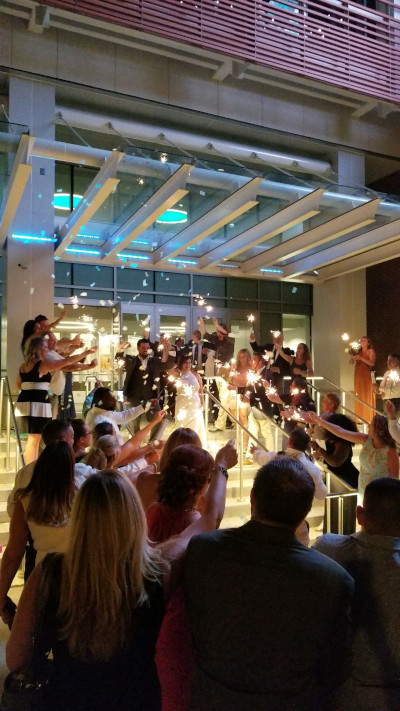 “There’s a new temperature for events,” Licygiewicz continues. “We’re seeing the ‘experience’ starting to come back. When people set foot in your facility, they want to see and remember something different — whether it’s a photo op area, a networking space, a quiet space, or a sensory space. People want to be wowed, and coming out of the virtual world, you had better have something cool planned. Creating those key moments and making the time for that balance during the meeting has become very important.
“There’s a new temperature for events,” Licygiewicz continues. “We’re seeing the ‘experience’ starting to come back. When people set foot in your facility, they want to see and remember something different — whether it’s a photo op area, a networking space, a quiet space, or a sensory space. People want to be wowed, and coming out of the virtual world, you had better have something cool planned. Creating those key moments and making the time for that balance during the meeting has become very important.
“How do we continue to stay up to date; how do we continue to not be sterile; and how do we continue to wow people as they come through our doors?” the GM posits. “Well, luckily, we are a new building and we have some really robust technology in place. We’re always looking to improve on those things and researching what the future will be. I have a feeling that in the next few years, we’ll be on track to get some more robust upgrades, but as far as technology goes, I would say signage communication is probably the biggest one that we’ve done — telling people where they have to go and making sure they are getting from Point A to Point B very cohesively. We installed a new LED wall and four or five more signs in the building to help get people where they need to be. We have great partners in ACES. They keep investing in their equipment and having the newest technology for producers in making sure that everyone’s meeting is going to plan.”
Assessing the market
“Thanks to the Albany Convention Center Authority and their continued support, we’ve taken a look at the state of New York as a whole, as well as where our competitors are regionally and nationally, to see where we measure up in providing experiences and treating the guest or exhibitor with something they’ll remember.”
Renovations were a focal point for the facility heading into this fall. “We just went through a soft finishes and full wall-to-wall carpet replacement. I’m proud to say we did not go the traditional route with one static pattern for the whole space. The ACCA worked with a design company and we brought in some really thoughtful designs. The pre-function space downstairs has its own look and feel; the meeting rooms have their own look and feel; the upstairs space has its own look and feel. We made them destinations within the convention center,” Licygiewicz shares. “In addition to the carpeting, almost every single white wall in the building got some sort of treatment – wallpaper, tiling, millwork, stainless steel. It’s quite a stunning upgrade and it really takes us into a luxurious atmosphere. The level of luxury that we created with this new interior atmosphere is going to be unmatched in our area.”
The ACC also partners with Discover Albany, an independent, non-profit corporation that serves as Albany County’s official Tourism Promotion Agency. The Discover Albany staff has been assisting visitors and meeting specialists for more than 30 years, acting as a community concierge to attract tourists and assure successful meetings, conventions and events held in Albany. “They will bring in a local pop-up shop for us, which is basically their visitor center that gets popped up in the convention center,” Licygiewicz reports. “This gives people an experience. They don’t have to go to the airport and grab a little tchotchke (Yiddish for a small, inexpensive, decorative trinket or souvenir). It’s at their convention. It’s creating these moments for people, and that’s where I see our focus and everyone’s focus moving forward in the next year or so.”
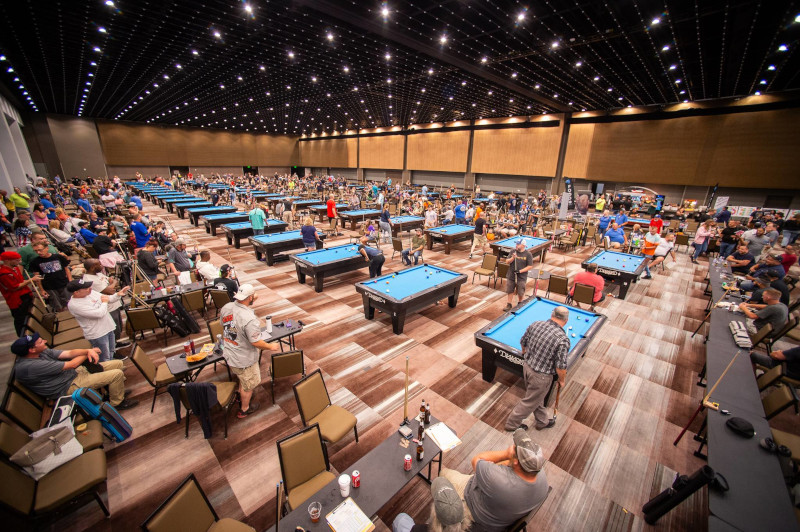
The sustainability agenda
Year-in and year-out, staying sustainable has always been a consistent goal for the ACC, although Licygiewicz admits that it was more difficult during COVID: “We went through a lot of pre-packaged food that got us through the timeframe, but perhaps we weren’t the most sustainable. But we just went full LED lights within the last 12 months, so that was a step forward. We’ve also started a sustainability committee this year that has resulted in our team focusing on questions such as, how do we continue to be mindful of our carbon footprint as a facility? What can we do during downtimes to conserve energy? Meeting planners are looking for ways to incorporate sustainability into their events so what can we offer them in the way of a toolkit?”
Licygiewicz answers some of her own queries: “For example, a lot of groups get box lunches and salads and sometimes things end up in the trash because people are on the go and don’t finish meals. So we started an easy, friendly program. If a group is providing box lunches, our food and beverage team puts baskets at the end of the buffet table along with a sign that says if there are any unwrapped items in your boxed lunch, please put them in the baskets. We then donate these extra food items to the local missions and recovery programs in our area.”
Another example that she shares is, “if you’re renting AV equipment, can it be turned off at certain times? It’s looking at all the different aspects of an event and trying to find the small ways to make it a little more environmentally friendly. It all adds up.”
People are key
While a convention center can have great aesthetics, a robust technical infrastructure, and a dedication to sustainability, in the end, hospitality is a people-centered business. So it has to be run by people who know how to treat people well. “We’re only as good as the people inside and I’m very lucky to have a super dynamic team,” Licygiewicz states. “I am proud of the focus that our group has on customer service and the kindness of our staff. Every person who walks through our doors is treated with a smile by all staff members. And it starts with the selling process. Our sales team is very interactive; they treat everyone like family. We know it’s a big investment and that there are a lot of choices for an event facility, which we appreciate. We show our appreciation through our service to our clients. All of our partners — Mazzone Hospitality, ACES AV — also have the customer service bug. They know the way we like our clients to be treated.”
Hospitality is also a business that requires cool heads and quick thinking. “It’s a stressful environment,” notes Licygiewicz. “But if you continue to get the right people around a problem, everything can be solved when we stay calm, put our heads together, and work as a team. All of us in the hospitality field are so good at thinking on our feet, putting out fires, and coming up with solutions.”
Getting back to business
Now that the Albany Capital Center has entered the new post-COVID era, Licygiewicz says that her top priority going forward is increasing the number of events and the facility’s selling capacity. “We want to continue to be strong partners with Discover Albany and work with them to book those larger, multi-day events that increase the economic impact via hotel nights in the county,” she says in conclusion. “And continue to be the best version of ourselves that we can be.”
AT A GLANCE
Albany Capital Center
WHAT: A premier event and meeting destination in the heart of downtown Albany, New York
WHERE: Albany, New York
WEBSITE: www.albanycapitalcenter.com
